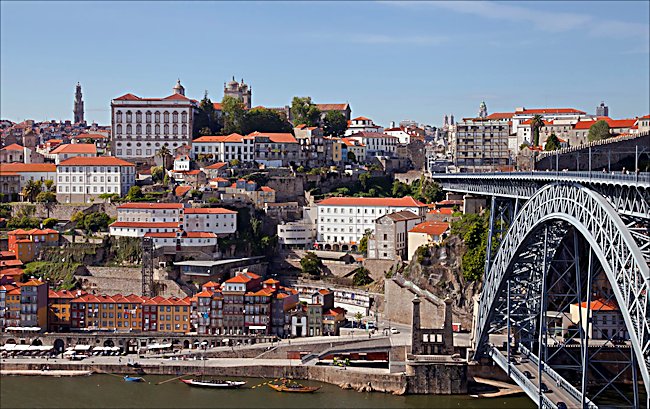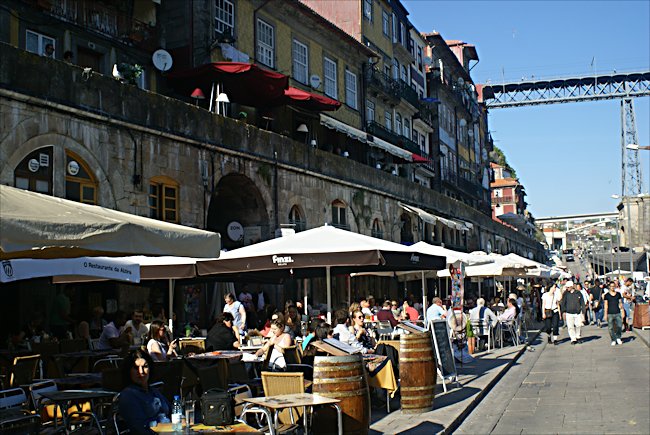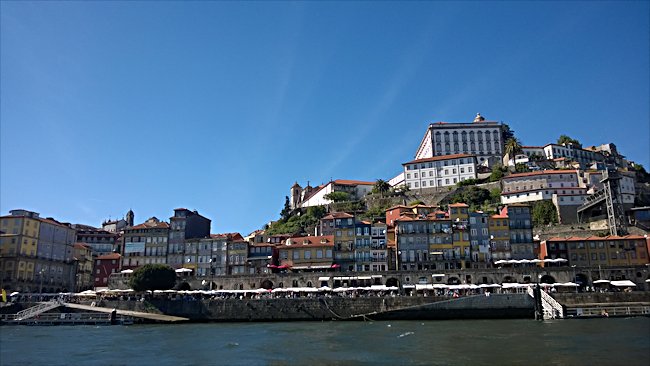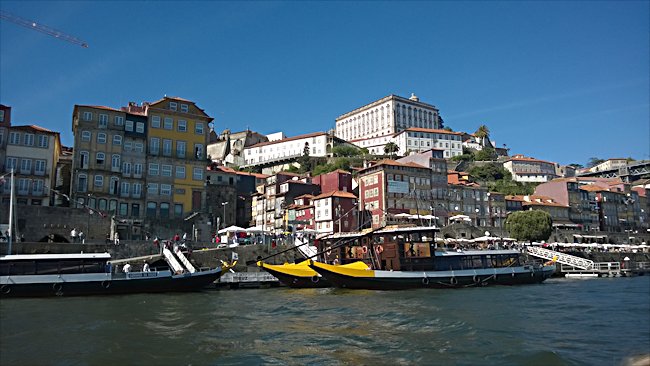Porto's Cais da Ribeira Waterfront
The Cais da Ribeira area of Porto in Portugal is the name of the road along the northern riverbank of the River Douro, It is very popular with tourists and locals who desire to have a drink or meal in a historic, attractive location.

This is the view of Porto's Cais da Ribeira waterfront
The Cais da Ribeira starts from the Westside of the Luis I wrought iron bridge and follows the riverfront until it meets the Ribeira square. This location must be on all tourists lists of things to see and do when visiting Porto. You should aim to come back at different times during the day.
It is here that you buy tickets for the Six Bridges River Cruise. This should be one of the first things you ever do when you visit Porto. Upon your return from your river cruise, spend time walking along the riverfront and look at the products on sale in the shops.
Although many are full of tourists trinkets, if you look hard, you will find some interesting high quality and unusual Portuguese products. Portugal is one of the worlds and exporters of Cork. You will find many craft items made from Cork. Some of them very unusual. You will find hats, wallets, pens, handbags , as well as traditional items like drinks mats.

Behind the cafes of Cais da Ribeira waterfront is the remains of the old city walls with a walkway on top.
The Cais da Ribeira is packed with cafes, bars and restaurants. They are not only to be found on the ground level, but as you can see in the above photograph, there is an upper walkway where you can also sit drink and eat, whilst looking at the ships going by on the River Douro.
The upper walkway is in fact the top of what remains of the original mediaeval city walls. This is where mediaeval Portuguese soldiers would have patrolled. Now houses have been built immediately on and behind the wall. Most have been turned into shops or bars. Find an eating or drinking establishment you like the look of. Sit down and order a Portuguese beer or glass of port. Just people watch, enjoy the atmosphere and follow with your eyes the boats gliding up and down the river. It is a lovely way to relax on holiday.
There is a network of narrow streets and alleyways behind the riverfront that are great fun to explore. You will find crumbling buildings next to recently restored properties. Gradually, local government money and private investment is being put into the Ribeira district. Each year it is improving its appearance. This is still a long way to go but the place has character. Save part of a bread roll and feed crumbs to the large fish that swim near the river bank.

View of the Cais da Ribeira quayside from the river Douro's southbank.
For nearly 1000 years, the Ribeira area of Porto was where merchant's boats would unload their diverse cargo from around the world. They set up shops and warehouses in the arches built into the city wall , as well as on the sloping land behind it..
As their business became more profitable, they needed to expand their Riverside business premises. They could not go sideways as the land was already owned by other entrepreneurs. Their only option was to build extensions to their property, vertically. This is why there are so many tall, thin buildings along the river Douro waterfront.

The Porto's Ribeira waterfront is where you get on the six bridges river Douro cruise boats.
Absorbed the wonder of this charming part of Porto. Climb the many staircases (escadas). Wander through tiny squares (largos) and admire the multicoloured tiled faced tall, thin houses. If you are lucky you will catch a glimpse of how people live in the small alleyways. Notice how they dry their washing.
If you get lost, do not panic, just head downhill and you will reach riverfront again. Part of the fun is getting lost and exploring. Remember to look up and admire the different building designs and methods of external decoration. The use of tiles on the outside of buildings was introduced Portugal around 700AD, when the country was occupied by the Islamic Moors of North Africa.
Travel Books


Tweet